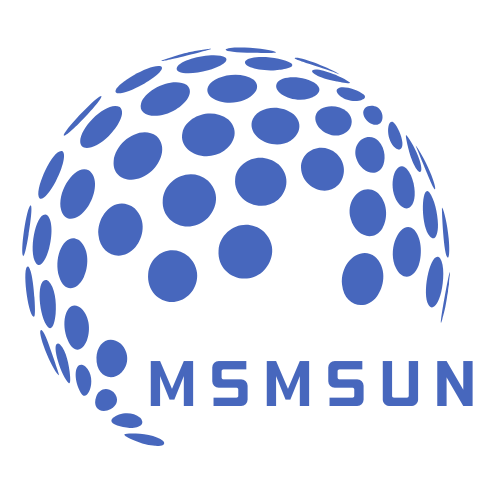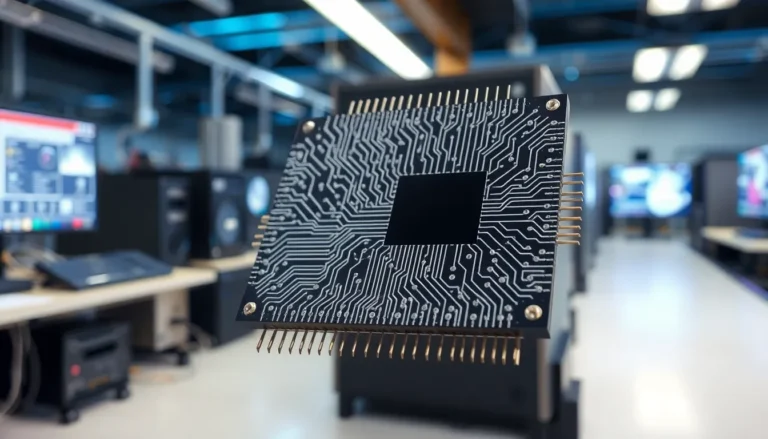In a world where everything from your fridge to your car can be smarter than your average bear, Google Cloud IoT emerges as the superhero of connectivity. Imagine a universe where devices chat like old friends, sharing data faster than a gossiping grandma at a family reunion. That’s the magic of Google Cloud IoT, turning the Internet of Things into a seamless reality.
Table of Contents
ToggleOverview Of Google Cloud IoT
Google Cloud IoT offers a comprehensive framework for managing smart devices and their data. This platform seamlessly integrates various components, enabling the interaction and functionality of IoT ecosystems.
Key Features
Google Cloud IoT encompasses several essential features. Device management allows users to onboard, configure, and monitor devices efficiently. Data processing utilizes real-time analytics to gain immediate insights. Security is a priority, with built-in encryption and identity management to protect sensitive information. Integration with machine learning services enhances predictive maintenance capabilities and decision-making processes. The flexible connectivity options support various protocols, enabling compatibility with a wide range of IoT devices.
Benefits
Google Cloud IoT delivers multiple benefits for organizations. Scalability accommodates growing network demands, providing room for expansion without performance degradation. Cost efficiency results from reduced operational expenses through optimized resource usage. Improved data insights empower organizations to make informed decisions and enhance their operations. Enhanced security measures protect devices and data from vulnerabilities, ensuring compliance with industry standards. The seamless integration with existing Google Cloud services streamlines workflows and boosts productivity across various sectors.
Google Cloud IoT Architecture
Google Cloud IoT architecture consists of several components that work together to facilitate seamless device management and data processing.
Components
Key components of Google Cloud IoT include IoT Core, Pub/Sub, and BigQuery. IoT Core allows secure connection and management of devices, ensuring reliable data transmission. Pub/Sub handles messaging between devices and applications, supporting real-time communication. BigQuery provides powerful data analytics capabilities, enabling users to analyze large datasets efficiently. Google Cloud Identity and Access Management enforces access controls, enhancing security. Lastly, integration with machine learning tools offers predictive insights into operations, optimizing performance across IoT ecosystems.
Data Flow
Data flow within Google Cloud IoT operates through multiple stages to ensure efficient processing. Devices send telemetry data to IoT Core, which facilitates secure ingestion of data. Once ingested, Pub/Sub distributes messages to relevant applications, enabling real-time analysis. Stored data then enters BigQuery for deeper analysis and visualization. Users can generate reports and gain insights on device performance. Integration with machine learning allows for predictive analytics, ultimately improving operational efficiency. Effective data flow simplifies decision-making processes, enhancing overall business agility.
Use Cases Of Google Cloud IoT
Google Cloud IoT supports diverse applications, leveraging its powerful capabilities to enhance various industries.
Industry Applications
Manufacturing leverages Google Cloud IoT for optimizing production lines and predictive maintenance. Healthcare enhances patient monitoring through connected medical devices, improving treatment efficiency. Agriculture utilizes real-time data from sensors to boost crop yields and resource management. Smart cities implement IoT solutions for traffic management and energy optimization, driving sustainability. Retail harnesses insights from customer behaviors captured by connected devices, enhancing the shopping experience.
Real-World Examples
Caterpillar employs Google Cloud IoT for monitoring heavy machinery performance, lowering downtime through predictive analytics. Philips integrates the platform in connected lighting systems, optimizing energy consumption for smart buildings. The city of Los Angeles utilizes IoT for real-time traffic data analysis, improving traffic flow and reducing congestion. Nest uses Google Cloud IoT to deliver intelligent home automation, simplifying user interactions with their devices. Additionally, John Deere enhances agricultural efficiency by connecting tractors with cloud services, enabling data-driven decisions.
Comparison With Competitors
Google Cloud IoT stands out in the competitive landscape of cloud IoT solutions. Other platforms, such as AWS IoT and Azure IoT, offer unique features that cater to specific business needs.
AWS IoT
AWS IoT provides a reliable infrastructure for device connectivity and management. With features like AWS IoT Core, it allows for secure interactions between devices and the cloud. Scalability is a significant advantage, accommodating large volumes of connected devices. Predictive analytics using AWS services enhances operational efficiency. The platform integrates well with existing AWS tools, enabling a streamlined approach to building IoT applications. Security measures, such as mutual authentication, ensure robust data protection throughout device communication.
Azure IoT
Azure IoT differentiates itself with its comprehensive IoT suite, emphasizing strong integration with Microsoft services. Azure IoT Hub facilitates seamless device management and bi-directional communication. The platform’s analytics capabilities allow businesses to gain insights from connected devices efficiently. Enhanced security features, including device identity management, are crucial for protecting sensitive data. Organizations benefit from the scalability of Azure, allowing them to adapt to changing IoT demands effortlessly. Its synergy with Azure Machine Learning further enriches predictive modeling efforts.
Google Cloud IoT emerges as a transformative force in the realm of connected devices. Its comprehensive framework not only streamlines device management but also enhances data processing and security. By integrating seamlessly with existing Google Cloud services, it provides organizations with powerful tools to harness the full potential of IoT.
With real-world applications spanning various industries, Google Cloud IoT demonstrates its versatility and effectiveness. Companies can leverage its capabilities to improve operational efficiency and drive innovation. As organizations continue to embrace IoT solutions, Google Cloud IoT stands ready to support their journey toward a more connected and intelligent future.




